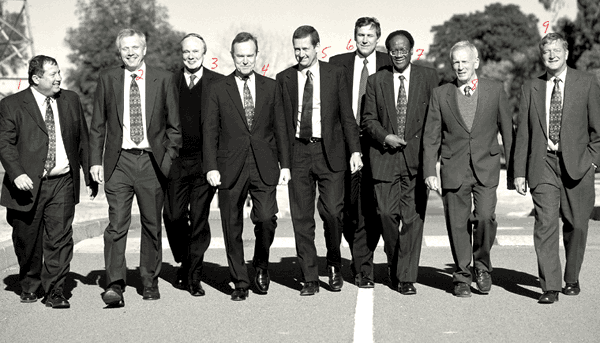
IT’S often been remarked of the mining sector that the lack of institutional memory is one of the reasons it repeats past mistakes such as over-producing when the market improves. Why, say its critics, can’t mining companies recognise and navigate the nature of the cycle that governs them?
Take note, therefore, of the gold hedge taken out by Harmony Gold earlier this month in which it sold forward roughly a fifth of its production for two years.
In terms of the hedge put in place, it will sell 20% of its gold for two years – about 432,000 ounces – at an average price of R682,000/kg. The rand gold price is R607,000/kg at the time of writing, and nearly R20,000/kg lower than when a version of this article was written for Finweek magazine on July 19.
That decision was most likely informed by the firm’s CFO, Frank Abbott, a wily, understated man who’s been running the firm’s books for 20 years. Abbott knows well how quickly conditions can change in the gold market, and how Harmony Gold, in particular, is at the mercy of the cycle.
According to the estimates by JP Morgan Cazenove precious metals analyst, Allan Cooke, Harmony is highly geared to changes in the rand gold price: a 10% improvement raises company earnings by 30%. Of course, the opposite is true when the gold market heads south.
Two years is quite a long time for some of Harmony’s shorter life mines such as Masimong and Unisel which comprise about 10% of total production of about 1.1 million oz. Locking in the gold price, therefore, provides cash flow certainty especially as these mines are high cost and hard to manage.
JPMorgan assumes a rand gold price of R691,150/kg in 2017 and R667,840/kg in 2018 against which that hedged production would return earnings 2% below the bank’s forecast for Harmony in 2017, but 4% above forecast earnings for 2018; in other words, there’s not a great deal of variance on the forecast spot price. In return for the cash flow certainty the hedge provides, this makes sense.
On top of this, Harmony’s balance of production – some 80% of total equal to 880,000 oz – remains open to the spot price of gold which, given the uncertainty of international politics and global economics could yet offer significant upside.











